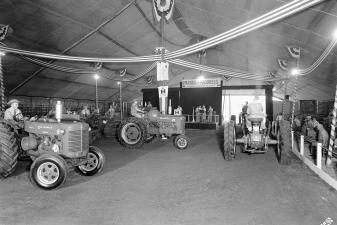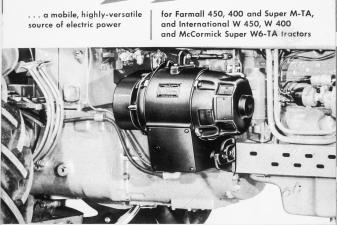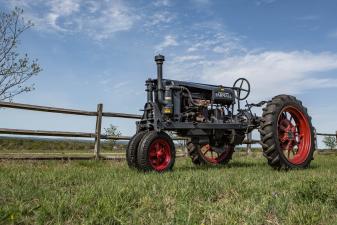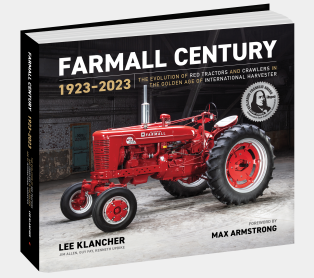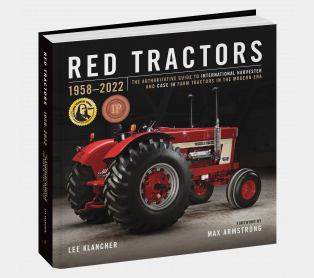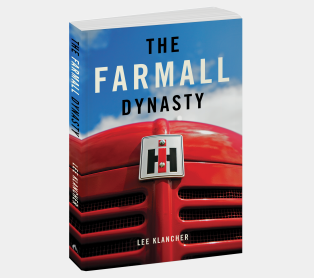Money & Wit: The M&W Story

The 100th Anniversary of the revolutionary Farmall tractor is celebrated in Farmall Century: 1923–2023, the authoritative model-by-model history that traces the evolution and design of the most significant farm tractors of the 20th century. Award-winning author Lee Klancher chronicles how and why the Farmall tractor came to exist and how it evolved with his signature blend of compelling stories, engaging text, and spectacular images. The following excerpt is a glimpse into the history of aftermarket company M&W. Started by two men who saw a need to improve the Farmall M, their mechanical genius led to twenty-one add-ons that enhanced the machine's power and work capability! Read on to hear how they got their start.
Elmo Meiners was a farmer and business owner in central Illinois. While working with his 1941 Farmall M tractor, he came to realize the five-speed transmission was too widely spaced and the operator had to bring the tractor to a dead stop to shift. He took his problem to Art Warsaw, who was a trained mechanic that owned an International dealership in Minier, Illinois, located between Peoria and Bloomington.
In 1946, Warsaw and his friend, Meiners, began working on a solution in the basement of the Meiners Grain Company elevator building in Anchor, Illinois. They tore apart Meiners’s M, jammed the drivetrain into the building’s elevator, and put it into the basement. They scavenged an electric motor from the building’s coal furnace and hooked it up to the M’s transmission so they could spin it and test it.
With Warsaw serving as engineer and Meiners as helper, the pair built a high-low range gearset that was installed inside the stock transmission of the Farmall M, turning the five-speed into a nine-speed transmission. It was a high and low range unit that affected only the first four gears. In low, first through fourth were lower and more tightly spaced than factory. In the other setting, the first four gears were higher—but also more tightly spaced. The top transmission speed—fifth gear—was not affected by the M&W kit.
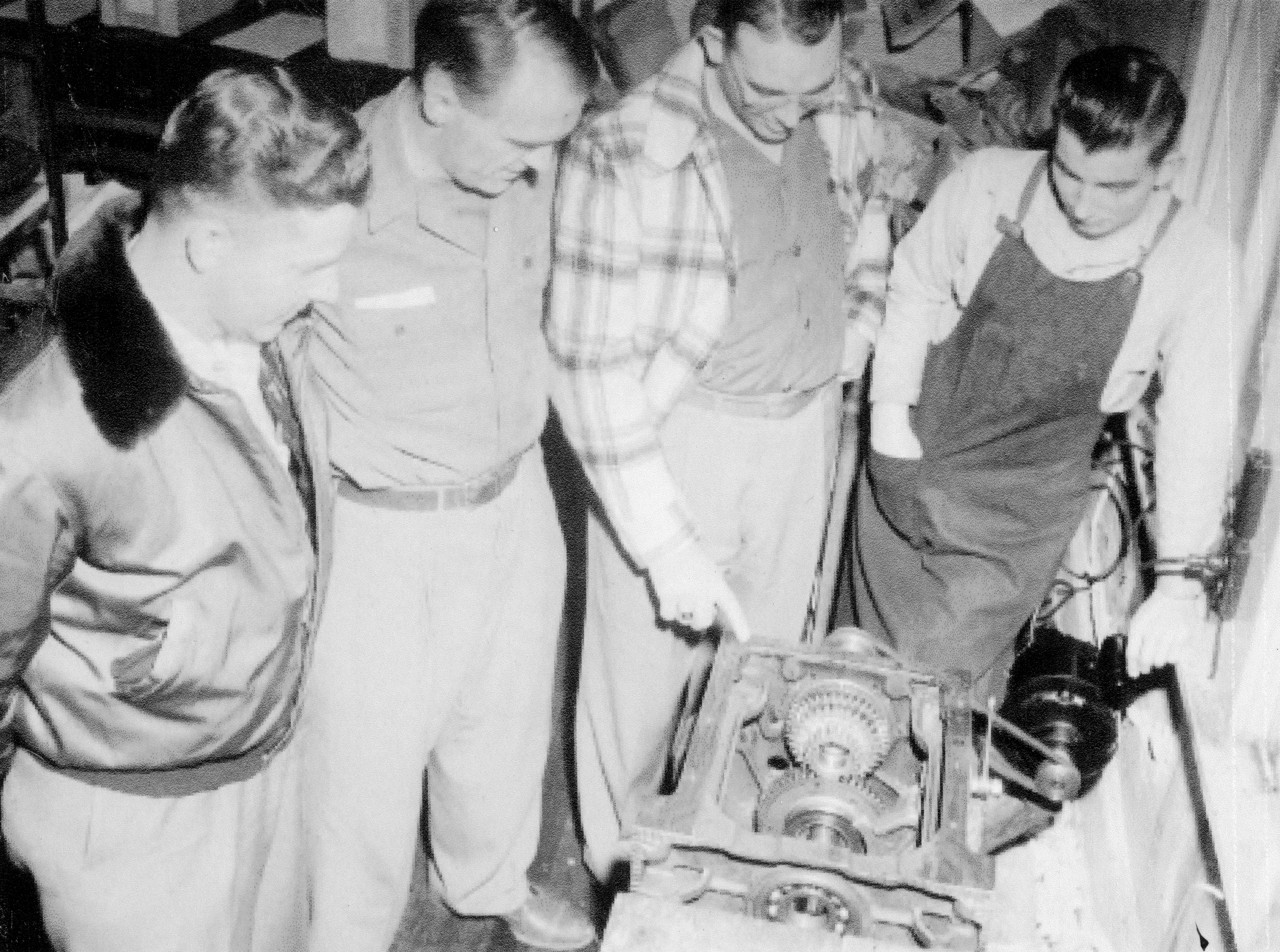
This is the first M&W nine-speed transmission, shown when it was designed in the basement of an office building in Anchor, Illinois. Art Warsaw (center left) and Elmo Meiners (with finger on transmission) disassembled Elmo’s 1941 Farmall M and took it into the basement to design the transmission. Bill Burnham Collection
The M&W nine-speed kit also affected the PTO speed, which required Art and Elmo to design a disconnect to maintain the proper PTO speed. The gears in the M&W kit meshed a bit more smoothly than the stock IH transmission, which meant the M&W nine-speed shifted more quickly and easily. The unit tucked nicely inside the stock transmission case—the entire piece of kit was well-made and clever.
Once the transmission was working in the basement, Warsaw and Meiners hauled it upstairs and reassembled the 1941 Farmall M, a machine they dubbed “Gramps.” They perfected that first transmission on Gramps, and that 1941 M would become their primary test machine.
When Warsaw and Meiners hit the road to sell their first transmissions, they traveled to dealerships in the central Midwest and demonstrated the nine-speed in Gramps. Bill Burnham Collection / Lee Klancher
Bob, the nephew of Elmo Meiners, recalls learning how to drive a tractor on Gramps. He also recalls their test machines looking pretty rough, as they were more concerned about power and performance than shiny paint.
With their nine-speed transmission working, Elmo Meiners and Art Warsaw named their new venture the M&W Company. While one might think the initials were for their last names, the two liked to say it was for “Money” and “Wit,” reflecting the fact that Meiners managed mainly promotion and sales (money), and Warsaw did more of the tech development (wit). Installation of the M&W nine-speed kit required disassembly of the transmission, drilling one hole, adding an engagement lever and cable, and dropping in the new gearset. This was fairly straightforward work, but it needed to be done by a skilled mechanic.
Warsaw and Meiners believed the best way to sell their new transmission kit was through IH dealerships. Their IH branch house was in nearby Peoria, Illinois, and it serviced eighty-one dealerships in the region. In fall 1948, when M&W rolled out its new kit for a retail price of $159 ($1,931 in 2023 dollars), those eighty-one dealerships were its target market.
This Farmall M has every option available from M&W (see list below). Owner and historian Bill Burnham is shown in the shop where he restored this tractor and many more. Bill Burnham Collection / Lee Klancher
To promote the new nine-speed transmission, the pair traveled around the region, demonstrating it with Gramps. They created a paper M&W sign touting the new transmission’s capabilities, fastened it to Gramps with masking tape, and hit the road. The pair would demonstrate the nine-speed in Gramps at two hundred dealerships that year.
The men had hit upon a solution to a problem that many farmers were experiencing, and the result was an overwhelming demand for their kit. They built transmissions furiously in the basement of an office building for a local grain elevator company. By early 1949, they had a nine-speed transmission kit built for the H as well as the M, and they were unable to keep up with demand. They purchased an old schoolhouse four miles east of Anchor and hired six employees to build and ship transmission kits.
An interesting piece of lore goes that the transmission kit in the H made it more noticeable that the stock H engine’s horsepower was inadequate, and that prompted Art and Elmo to build big-bore piston kits for the Model H to power them up. Bill Burham has heard the story from his father and others, but can’t say for sure it is fact!
One of the first new employees was Don Biefeldt, a kid fresh out of high school who sought out Elmo on Christmas Day 1949 to ask him for a job. Elmo hired him on the spot, with Don’s first day of work being December 27, 1949. Biefeldt soon became the foreman, and he would stay with M&W until April 1995. The six employees became incredibly efficient, building one thousand kits a month, averaging an amazing fifty kits built each work day.
This Farmall M (same as on opposite page) is equipped with all twenty-one M&W options available for the Model M. Note the Super-Snoot Radiator Protector is not shown. Bill Burnham Collection / Lee Klancher
All Options for the Farmall M Offered by M&W:
- Add Life Oil Filter
- Add Pow-r Carburetor Kit
- Add Pow-r Dry Type Air Filter
- Add Pow-r Governor
- Clutch Extension (made pedal easier to press)
- Friction Throttle
- Gear Reduction Starter (73 percent more starting power)
- Hi-Lift Rocker Arms
- Hi-Torque Crankshaft
- Jet Black Sleeves (Teflon cylinder sleeves)
- Live Hydraulic System
- Live Power PTO
- Nine-Speed Transmission
- No-Clog Front Wheel Cleaner
- P-61 Dual Hydraulic Control Valve
- PTO Shifter
- Pulley Shifter
- Slip-On Axle Dual Mounts (hubs)
- Super-Snoot Radiator Protector (not shown—put on for harvesting corn)
- Turbo Dome Pistons
- Two-Point Hitch Brackets (to mount Farmall 450 Fast Hitch; very rare—M&W made maybe two dozen of these)
For more stories like this one, check out the Related Content and Related Books linked below!


